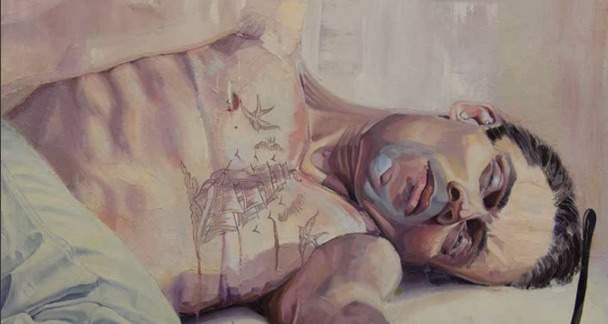Kare Martens: Homeward
The strange and lonely life of men at sea made tender.
Overview
The subjects of Kare Martens’ paintings are not pretty. They are former sea men: scarred, missing teeth, big bellied, tattooed. But somehow he has crafted a small series of lovely portraits that gently allude to the strange and lonely life of men at sea. In Martens’ native Norway, young men not interested in pursuing further education instead went to sea. They returned with experiences not easily understood by other people. Martens’ portraits of these “rabbagastas” aim to tell the stories that underlie their gruff exteriors.
The sailors’ tattoos are codes: a sparrow is five thousand miles of voyaging and two sparrows are ten thousand; a pig protects from drowning; pinup girls remind the sailor of what awaits him at home, a ship means he has circumnavigated Cape Horn. One sailor’s ship is sinking across his chest.
Perhaps the most effective images are those of sailors sleeping. Here they are at their most vulnerable: an arm flung sideways across the bed; a pair of glasses falls aside. Martens is a designer by trade, and this influence shows in his attention to composition and subtle, spare colour. But the work is that of a skilful, traditionally trained painter. There is no other way to say this: the sailors’ flesh is just so fleshy; pink and sandy and broken with wide pastel blue strokes.
Martens imbues his paintings with tenderness, honesty and respect without veering into sentimentality. This is painting as storytelling.
Image: Kusse-Holger (Pussy Holger) by Kare Martens.





